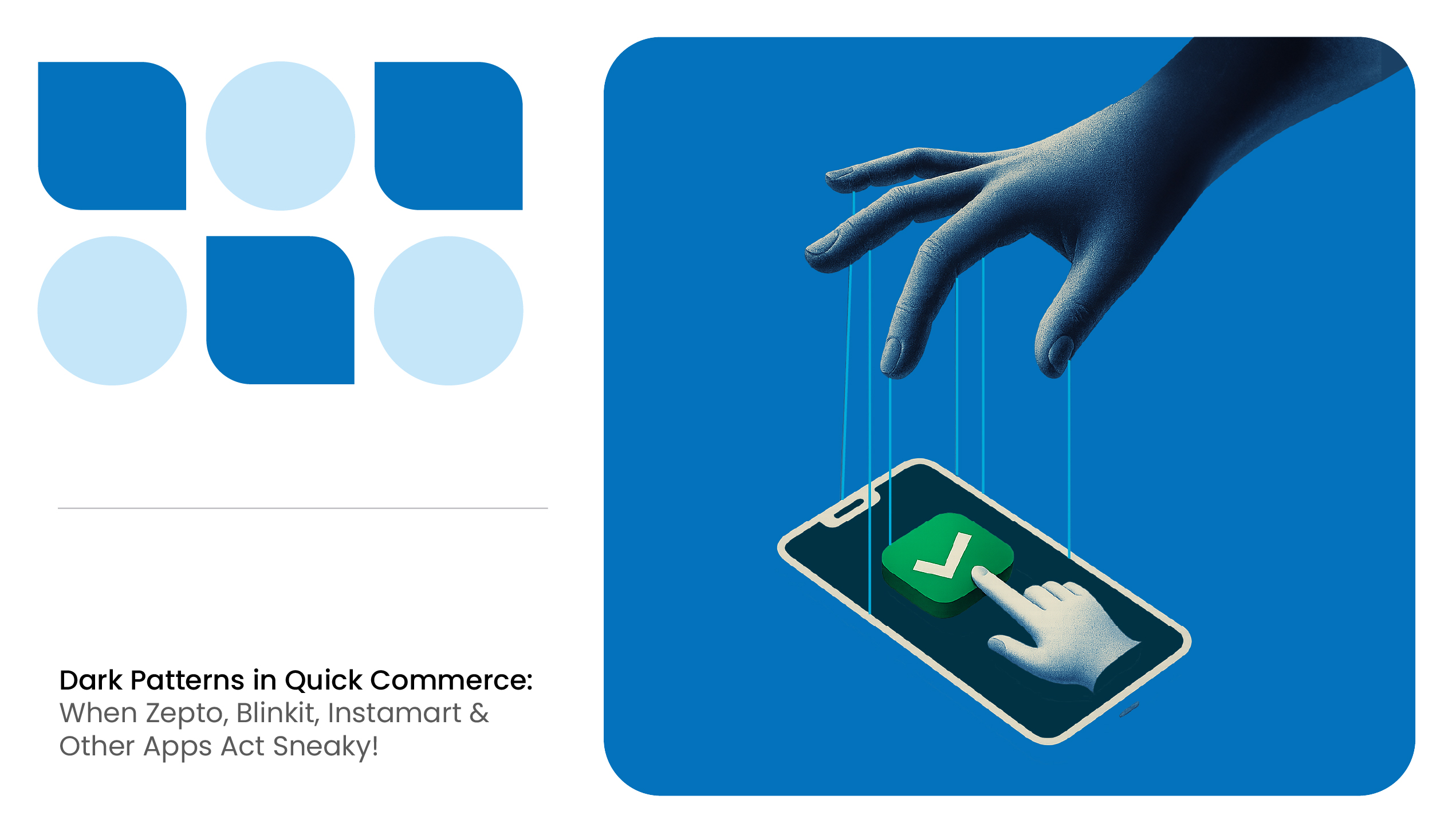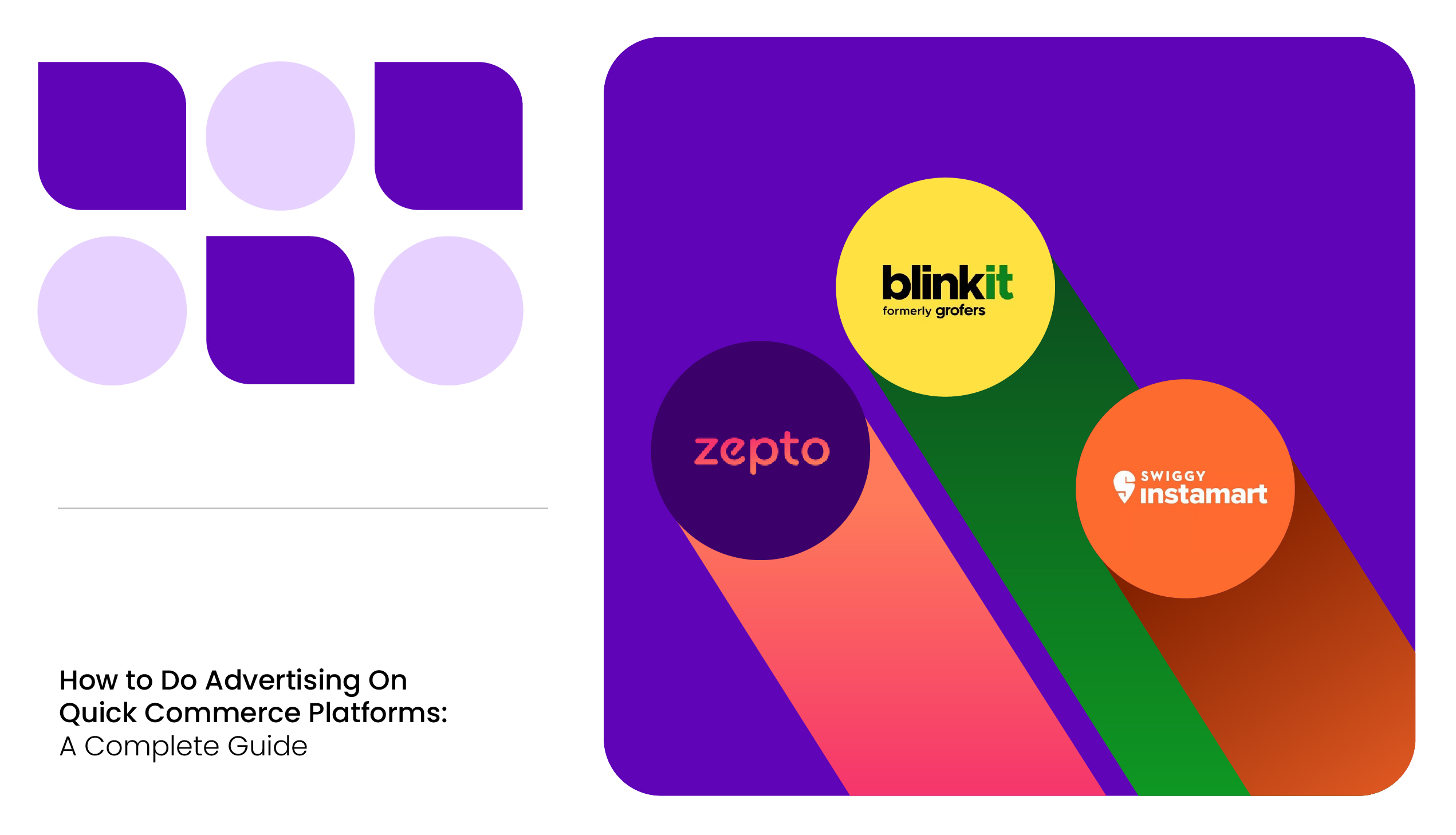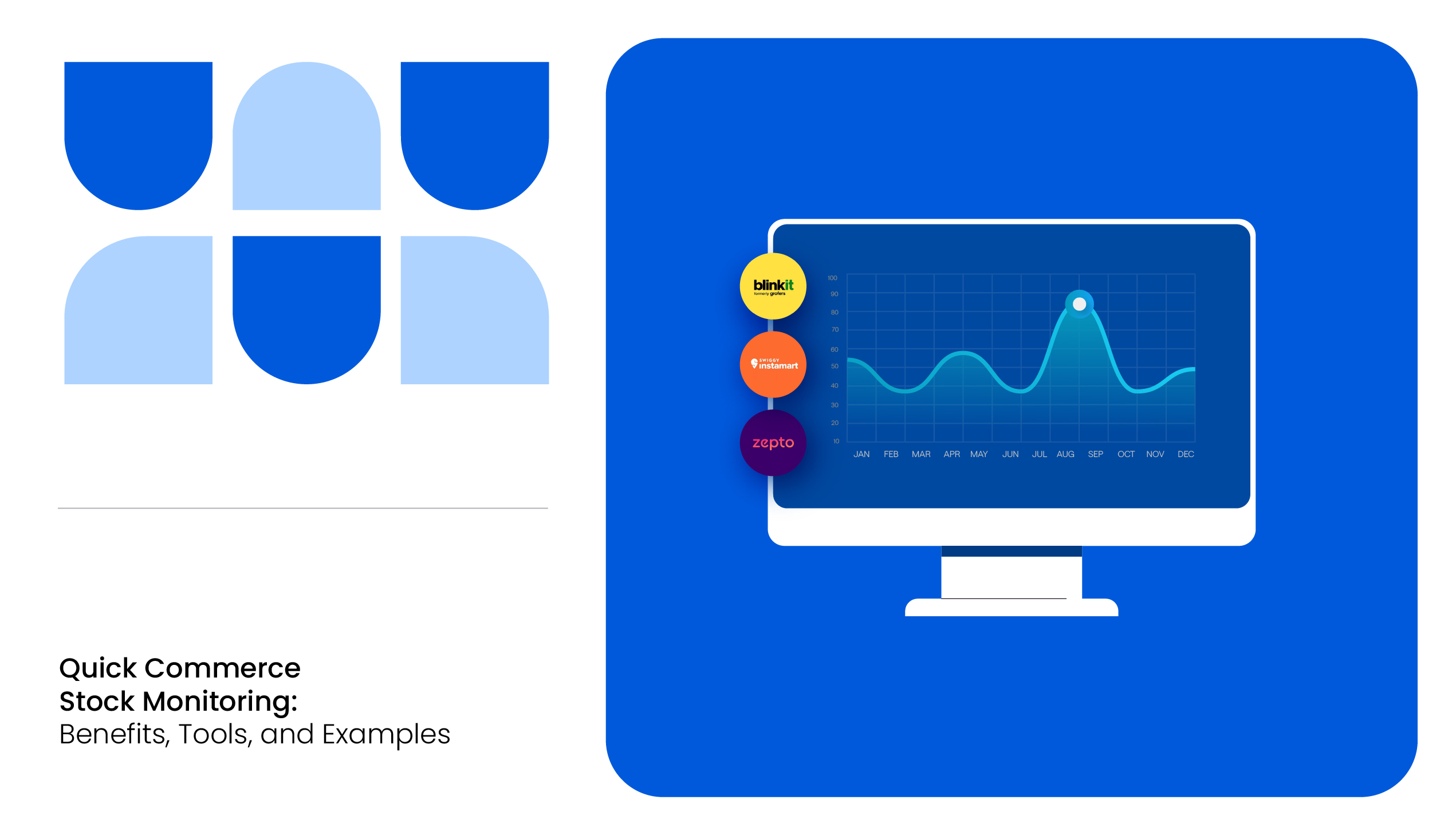The Indian quick commerce market is projected to reach $5.38 billion in 2025. One of the key players in India’s quick commerce sector is Swiggy Instamart.
According to MetricsCart’s quick commerce dashboard, as of July 2025, more than 1,200 brands are listed on Swiggy Instamart in Bengaluru. If you are a brand selling on Swiggy Instamart, it is essential to stay on top of pricing, discounts, and inventory management to achieve success.
With a Swiggy Instamart price tracker, you can gain insights into the product’s price, discount, and stock status. With daily-updated analytics, brands can instantly identify price changes and stock shortages, enabling them to act quickly and stay ahead of their competitors.
What does Swiggy Instamart Price Tracker offer?
Swiggy Instamart price tracker from MetricsCart is designed to give brands a clear view of how their products and competitors’ are performing on the platform. From pricing changes to stock status and discount patterns, the dashboard delivers actionable insights that help brand and category managers stay ahead on Swiggy Instamart.
Real-Time Product-Level Pricing
Brands are constantly launching new products, updating MRPs, and running limited-time promotions but often, they’re doing it without real visibility into how those pricing decisions are playing out on Swiggy Instamart.
Without real-time data, they’re left guessing: Are their prices aligned with the market? Are competitors undercutting them today? Is a recent MRP change helping or hurting performance?
The Swiggy Instamart product price tracker displays the average price of all products and breaks down the number of items in each price range. This price distribution chart illustrates the pricing range of most products.
![]()
From the image above, 4,237 products are priced within the 30-102 price range. For brand managers, this means immediately identifying if a competitor drops prices or if the price of your product changes. Since MetricsCart refreshes data continuously, the latest prices are displayed in the tracker without requiring manual updates.
Discount Patterns
Running a promotion without knowing what others are offering is a common and costly mistake. Brands may offer a 10% discount while competitors are going all in with 30% off.
The Swiggy Instamart deals tracker reveals discount trends across Instamart. It displays the average discount percentage and how products are distributed across various discount levels.
![]()
For example, you can see how many items have 0–10% off, 20–30% off, and so on. Moreover, the dashboard lists the top 10 discounted products by percentage, helping you identify flash deals or major promotions. By analyzing this data, brands can monitor the effectiveness of their promotions and adjust their own deals to stay competitive.
Stock Availability
Many brand and category managers attribute sales dips to ads or pricing, but in reality, stock availability often tells the whole story. When a product goes out of stock on Swiggy Instamart, it doesn’t just impact that brand’s performance; it creates a vacuum that competitor products immediately fill, directly impacting revenue.
MetricsCart’s dashboard displays a stock availability ratio, the percentage of products that are in stock versus those that are out of stock at Instamart. If many items are out of stock, you can pinpoint supply issues.
![]()
Category managers can filter by product or location to see exactly which SKUs need restocking. This livestock view ensures you won’t miss sales opportunities due to unavailable inventory.
Category-Wide Pricing Insights
When it comes to pricing, most teams only focus on their brand, but what’s equally important is understanding how the entire category behaves.
The Swiggy Instamart product price tracker reports pricing statistics for each major category, and the dashboard displays the average and median prices for each category. It also shows how many products fall into each category.
For instance, you might discover that the median price in “Dairy, Breads, and Eggs” is ₹140, while in “Masalas” it’s ₹105
![]()
These insights extend beyond pricing parity, they help brands understand the structure and maturity of a category, as well as how pricing influences shopper expectations. You can easily identify whether your category is being led by premium players, if it’s dominated by price wars, or if there’s whitespace in mid-tier pricing that no one is owning yet.
Moreover, the dashboard helps identify category leaders—the brands contributing the most SKUs, offering the widest price coverage, or consistently topping the discount charts. This enables you benchmark your presence and align your pricing with market momentum.
If you can spot an underpriced or underdeveloped segment within your category and serve it better, you’re not just improving brand performance, you’re helping expand the entire category.
Brand Level Price Insights
Many brand and category managers operating on Swiggy Instamart face a recurring challenge: they’re unsure how their brand stacks up against competitors. Without granular data, it’s difficult to tell whether they’re leading the category with a broad product range, whether their pricing commands a premium, or if competitors are driving conversions with discounts.
This lack of visibility creates blind spots where brands might be overpricing SKUs while a rival quietly captures share, or they may be over-discounting and eroding margins unnecessarily.
The Swiggy Instamart price tracker tells you where your brand stands. It lists the number of products each brand has (e.g., “Top Brands by Product Count”) and identifies the leading brand on Instamart.
![]()
You can sort brands by average price or average discount, so you know which brands charge premium prices or offer steeper discounts. For example, if a top rival brand is consistently 15% cheaper on average, you might adjust your pricing accordingly.
Zip Code Level Data
Brand teams are often found asking: “What’s my stock availability in Koramangala vs HSR?” or “Are we offering the same discounts in Mumbai as we are in Bengaluru?” These aren’t minor questions; they’re critical to running a responsive, location-aware business.
Quick commerce platforms like Swiggy Instamart operate hyper-locally, and pricing, discounts, and stock availability can vary city by city. The MetricsCart Swiggy Instamart price tracker provides city-specific dashboards. This means you can compare how prices and discounts differ between cities like Bengaluru, Mumbai, or Delhi.
If a product is out of stock in one city but available in another, you can adjust your regional marketing accordingly. By drilling into city-level data, brands avoid a “one-size-fits-all” approach and tailor strategies to each local market.

How can Brands Use Swiggy Instamart Price Tracker?
For brands treating quick commerce as more than just an experiment, MetricsCart offers something far more powerful than a basic price tracker. Our Quick Commerce Intelligence solution is a comprehensive package, designed to provide you with visibility, context, and control across every aspect of your Instamart performance.
Understand Competitive Positioning
Brand teams can see exactly how their products stack up. By comparing your prices and discounts to market averages on Instamart, you know if you’re over- or under-priced. For example, if a competitor is undercutting your SKU, the real-time tracking will immediately highlight that. Brands use this intel to stay agile; if a rival starts a sale, you can react faster.
Optimize Launch Strategy
When launching a new item, the dashboard helps set the right price. You can analyze category price distributions and top deals to find popular price points. Historical data shows how prices in that category behaved around holidays or the launch of last year’s product, guiding the initial pricing and promotional level. This way, you avoid guesswork and target the price range most likely to sell quickly.
Track Category Share
The tool also helps track your brand’s share in each category. Using views like “Top Categories of Leading Brand,” you can see how many category listings your brand holds. Over time, this reveals whether you’re gaining shelf share or falling behind competitors.
Marketing teams use these insights to adjust advertising spend or promotions to boost category presence where needed.
Conclusion
In summary, the Swiggy Instamart Price Tracker on MetricsCart provides FMCG brands with a comprehensive view of pricing, promotions, and inventory. By harnessing this data, brands can make smarter decisions, from spotting a flash deal to optimizing launch pricing, rather than relying on manual checks.
With Instamart’s rapid growth, utilizing tools like MetricsCart ensures your brand remains competitive, agile, and poised to capture market share in India’s rapidly expanding grocery delivery market.
Struggling to measure your category performance? Get metrics on share of shelf, price, discount, & more.
FAQs
The tracker is a MetricsCart dashboard that scrapes Instamart for each product’s current price, discount, and stock data. It updates daily (or even more frequently), aggregates this data into charts and tables (as shown above), and provides filters by category, brand, and location.
It enables FMCG brands to monitor competitor pricing, understand market trends, adjust pricing strategies, and optimize product listings for better competitiveness and profitability.
Yes. MetricsCart continuously refreshes its Instamart data. The dashboard typically shows daily updates, and it can detect price changes almost instantaneously (with data refresh rates as fast as every 10 seconds. Users can rely on it to see recent changes.
Absolutely. MetricsCart provides separate Instamart dashboards for different cities, allowing you to compare metrics such as price and stock regionally. This enables brands to tailor their strategies to each market.
Yes, it is designed to handle a large volume of data, making it suitable for both small and large FMCG brands. It helps larger brands stay ahead in competitive markets with data-driven insights.






